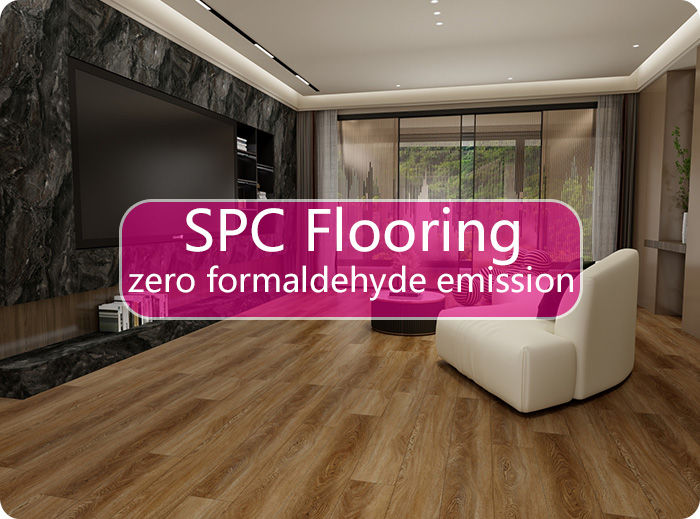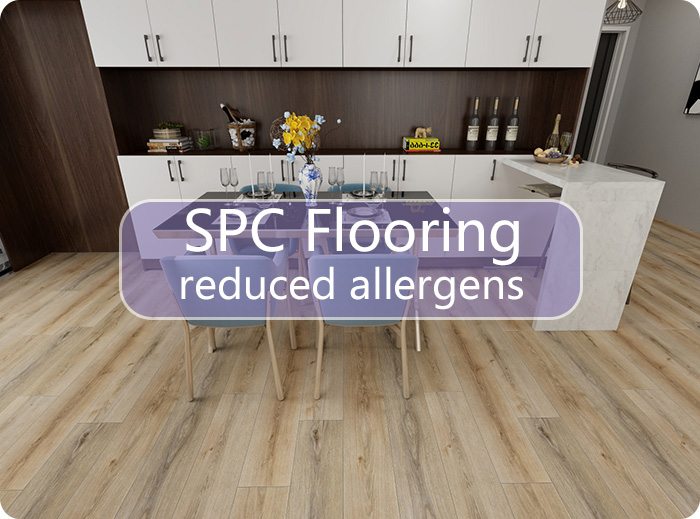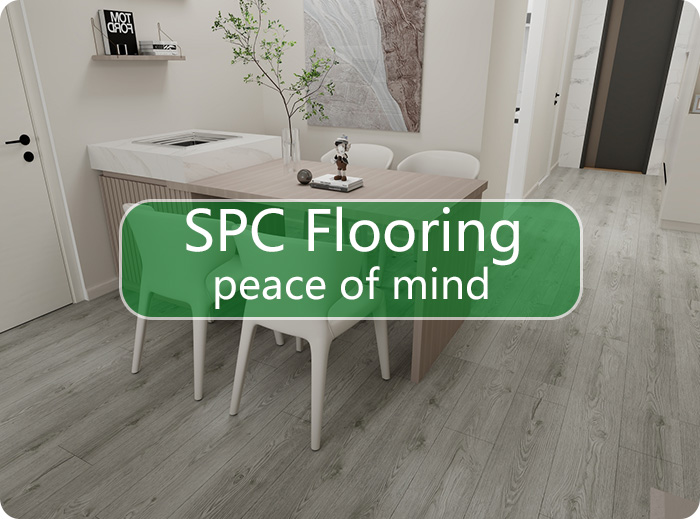Breathe Easy: Why SPC Flooring Offers Zero Formaldehyde Emissions
Dec 3, 2025, 9:20 AM
In recent years, the focus on indoor air quality has intensified, with homeowners and builders alike seeking healthier options for their living spaces. One flooring material that stands out in this regard is Stone Plastic Composite (SPC) flooring. Known for its durability and aesthetic appeal, SPC flooring is also celebrated for its zero formaldehyde emissions. In this blog, we will explore what makes SPC flooring an eco-friendly choice, the implications of formaldehyde in home environments, and the numerous benefits of opting for SPC flooring.
Understanding SPC Flooring
Before diving into the specifics of formaldehyde emissions, it’s essential to understand what SPC flooring is. SPC is a type of rigid vinyl flooring made from a combination of limestone, polyvinyl chloride (PVC), and various stabilizers. This unique blend creates a strong, waterproof, and dimensionally stable flooring option, ideal for high-traffic and moisture-prone areas of your home.

The Concern About Formaldehyde
Formaldehyde is a colorless gas with a strong odor, commonly used in building materials and household products. It is found in a variety of items, including:
- Plywood and Particleboard: Often used in furniture and cabinetry.
- Adhesives: Frequently found in flooring and construction materials.
- Textiles: Commonly used in fabrics for wrinkle resistance.
Exposure to formaldehyde can lead to a range of health issues, including respiratory problems, allergies, and even more severe conditions with prolonged exposure. Because of these health risks, many homeowners are increasingly concerned about the formaldehyde levels in their homes and are seeking safer alternatives.

SPC Flooring: The Zero Formaldehyde Emission Advantage
One of the standout features of SPC flooring is that it is produced without the use of formaldehyde. Here’s how SPC flooring achieves this:
- 1. Material Composition: SPC flooring is primarily made from limestone and PVC, neither of which emit formaldehyde. This inherent quality makes SPC a safe choice for indoor environments.
- 2. Manufacturing Standards: Reputable manufacturers of SPC flooring adhere to strict guidelines that prioritize low-emission products. Many SPC flooring options meet or exceed international standards for indoor air quality, including those set by the California Air Resources Board (CARB) and the European E1 standard.
- 3. Certifications: Look for SPC flooring with certifications that confirm zero formaldehyde emissions. Certifications from organizations like Greenguard or FloorScore can provide additional assurance that the product is safe for your home.
Health Benefits of Choosing Zero Formaldehyde Emission Flooring

Opting for SPC flooring with zero formaldehyde emissions offers several health benefits:
- 1. Improved Indoor Air Quality: With no formaldehyde released into the air, SPC flooring contributes to a healthier indoor environment. This is especially important for families with children, the elderly, or individuals with respiratory issues.
- 2. Reduced Allergens: SPC flooring is less likely to harbor dust mites, mold, and other allergens compared to traditional carpet or flooring options. This can significantly benefit allergy sufferers.
- 3. Peace of Mind: Knowing that your flooring choice does not emit harmful chemicals allows you to breathe easier and enjoy your living space without worry.

Additional Advantages of SPC Flooring
Beyond its zero formaldehyde emissions, SPC flooring offers a variety of other benefits that make it an appealing choice for homeowners:
- 1. Durability: SPC flooring is highly resistant to wear and tear, making it an excellent option for high-traffic areas. Its robust core prevents dents and scratches, ensuring longevity.
- 2. Water Resistance: With its waterproof properties, SPC flooring is ideal for areas prone to moisture, such as kitchens, bathrooms, and basements. You can enjoy beautiful floors without the risk of warping or damage.
- 3. Easy Maintenance: SPC flooring is simple to clean, requiring just regular sweeping and occasional mopping. Its resistant surface makes it less likely to stain or discolor.
- 4. Aesthetic Versatility: Available in various designs, colors, and textures, SPC flooring can mimic the appearance of hardwood, stone, or tile, allowing homeowners to achieve their desired look without compromising quality or safety.
- 5. Quick Installation: Most SPC flooring features a click-lock installation system, making it easy for DIY enthusiasts or professional installers to put down. This feature can save time and money during renovations.
Addressing Common Misconceptions
Some homeowners may still have doubts about SPC flooring. Let’s address a few common misconceptions:
Is SPC flooring plastic?
While SPC flooring contains PVC, it is designed to be durable and safe for indoor use. Its manufacturing process ensures that it meets health and safety standards.
Does SPC flooring have any smell?
Quality SPC flooring with zero formaldehyde emissions should not emit any harmful odors. If you experience any unpleasant smells, it may be due to low-quality products.
Is SPC flooring environmentally friendly?
Many SPC manufacturers focus on sustainability, using recycled materials and environmentally safe practices. Always check for certifications that verify their eco-friendliness.

When it comes to flooring choices, safety should always be a priority. SPC flooring not only offers a stunning aesthetic and robust durability but also ensures zero formaldehyde emissions, making it an excellent choice for health-conscious homeowners. By opting for SPC flooring, you can create a beautiful, safe, and healthy environment for your family. As the conversation around indoor air quality continues to grow, investing in zero formaldehyde emission flooring is a proactive step towards ensuring a better quality of life in your home. Choose SPC flooring today, and enjoy peace of mind along with stylish and durable floors.


 皖公网安备 34180202000049号
皖公网安备 34180202000049号